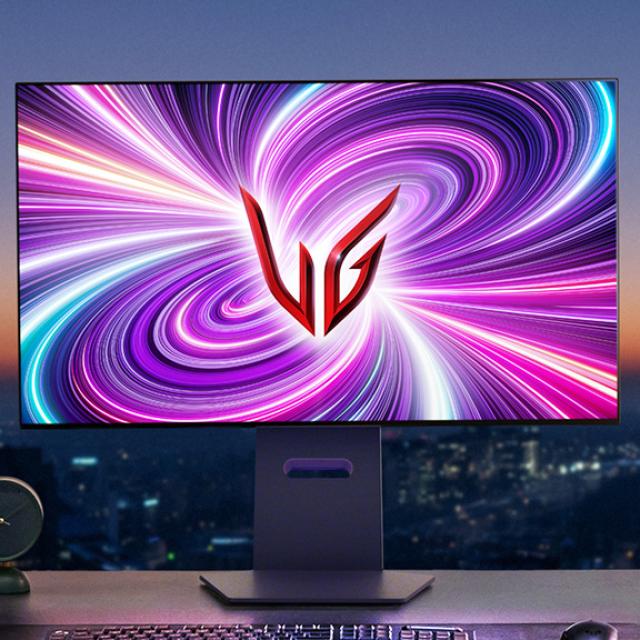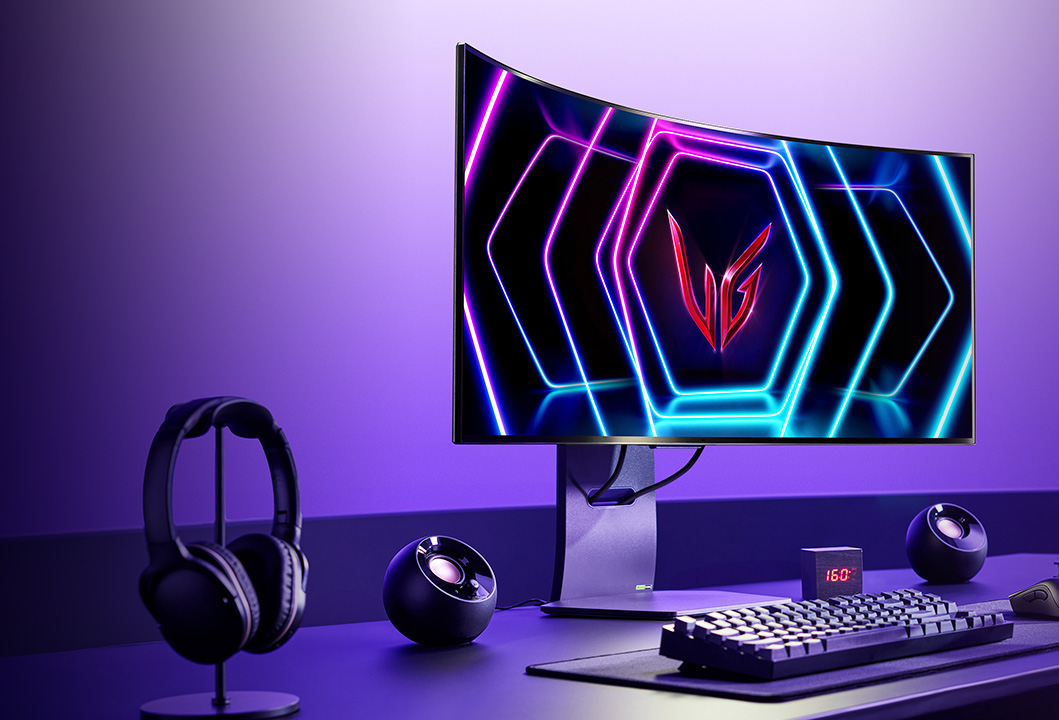
Read the reviews of 2 ultimate LG UltraGear gaming monitors here, namely the LG UltraGear 32GS95UE-B and the Curved 34GS95QE-B. Game on with LG!
Aad Munsterman
Specific wishes and requirements are imposed on gaming monitors, including a nice large, clear screen with rich colors in combination with the highest possible resolution, fast variable image refresh and response times. All this to be able to play the game optimally with undisturbed playback. In addition to all kinds of important technical specifications, there is also another aspect that intensely draws the gamer into the game: the width and curvature of the screen, so that you are surrounded by the image and thus forget the outside world. Read here how good the LG UltraGear 32GS95UE-B and the Curved 34GS95QE-B are as gaming monitors. For optimal results with these monitors, you need a system with a powerful graphics controller.
OLED and HDR
These LG monitors use OLED and HDR for the clearest possible image with natural colors. OLED stands for Organic Light-Emitting Diode and the screen consists of millions of small lights (diodes) that can each be turned on or off separately. When the light is off, the image is pitch black. Once on, depending on the control, a color becomes visible with a certain intensity. The advantages of OLED are deep black, high brightness with vivid colors, excellent viewing angles, very fast response time and the whole thing can be contained in a thin and light screen. In these monitors, LG uses the WOLED variant: a white pixel has been added for a brighter image, wider color coverage and to reduce the risk of burn-in.
In addition to SDR (Standard Dynamic Range) used for standard TV broadcasts, there is HDR (High Dynamic Range) for better picture. HDR is a technique in which extra information is added to the video signal, optimizing the image for extra brightness and contrast. The advantage of HDR is a more realistic image, making more details visible at higher contrast and sometimes even making it look like 3D. There are several HDR standards of which HDR10 is the most popular in the gaming world. Both monitors support HDR10 and are compatible with DisplayHDR 400 True Black. This is a specific certification for OLED screens that sets minimum requirements that a monitor must meet, such as peak brightness, color coverage and brightness.
(text continues below image)

LG UltraGear 32GS95UE-B Gaming Monitor 32 inch-4K WOLED
The LG UltraGear 32GS95UE-B has a simple and sleek design in black plastic with a hexagonal base and connections and RGB lighting at the back of the flat matte anti-reflection screen. The narrow edge houses a 32-inch OLED screen with a UHD resolution of 3840 x 2160 pixels and unique dual-mode image refresh of 240 Hz at 4K and 480 Hz at Full HD, which can be activated via a switch at the bottom edge. The pixel response time is super fast. The contrast is infinite and the SDR brightness is standard 275 nits with options to increase and 450 nits with a peak of up to 1200 nits for HDR. The color range is a nice 100% sRGB and 96.9% DCI-P3. The sound is reproduced by 2x 10 watt speakers that radiate against the screen (Pixel Sound) and sound surprisingly good.
(text continues below image)

LG Curved 34GS95QE-B Gaming Monitor 34 inch-QHD
What is striking about the LG Curved 34GS95QE-B with 21:9 screen format is the curvature of the screen, which provides a more intense experience. It features a wide 34” screen with WQHD resolution (3400 x 1440 pixels) and 800R curvature. The image refresh is 240 Hz with a very fast pixel response time. The contrast is infinite and the SDR brightness is standard 230 nits with options to increase and 430 nits with a peak of up to 600 nits for HDR. The color range is 100% sRGB and 96.9% DCI-P3. This monitor does not have speakers.
Technology
The underlying technology of both screens is virtually the same. The image can be input via 2x HDMI2.1 and 1x DisplayPort1.4 and there is a built-in USB hub with two USB-A/5Gbps outputs. The image processing has been expanded with HDR technology HDR10, where the screen meets the HDR True Black 400 certification. Dynamic image synchronization (VRR) is provided by AMD Premium FreeSync and Nvidia G-Sync compatible mode, which prevents image tearing and tearing.
The On-Screen Display (OSD) controls work via a mini joystick in the middle/rear of the screen and works quite smoothly. There is a wide range of settings available to satisfy every gamer. Optionally, the Windows OSC (OnScreen Control) can be installed to control the settings from the screen. LG Calibration and Dual Controller are other available utilities. The monitor has various features to prevent burn-in; Burn-in can only occur if the same image is displayed in the same place for a long time.
Ergonomics
The monitors stand on a very sturdy base with an arm that allows the monitor to rotate. The monitor can also be moved seamlessly in height from 10.5 to 22.5 cm from the desk for the flat screen and 2 cm more for the curved monitor. Furthermore, the screen can tilt and rotate; Wall mounting is optionally possible.
Conclusion
The WOLED image and the optional HDR processing are great techniques for displaying an optimal gaming image as we know from LG TVs. These monitors have everything that can be expected from a high-end gaming monitor and therefore provide excellent test results. Not present are a fast USB-C connection, Dolby Vision HDR and DisplayPort2.1. The suggested retail prices are on the high side, but street prices are more favorable.

LG UltraGear 32GS95UE-B
Recommended retail price: € 1399,-
+ sublime OLED screen
+ nice extensive gaming specifications
– recommended retail price
– no USB-C, Dolby Vision and DP2.1


LG Curved 34GS95QE-B
Recommended retail price: € 1299,-
+ sublime OLED screen
+ nice extensive gaming specifications
– recommended retail price
– no USB-C, Dolby Vision and DP2.1
